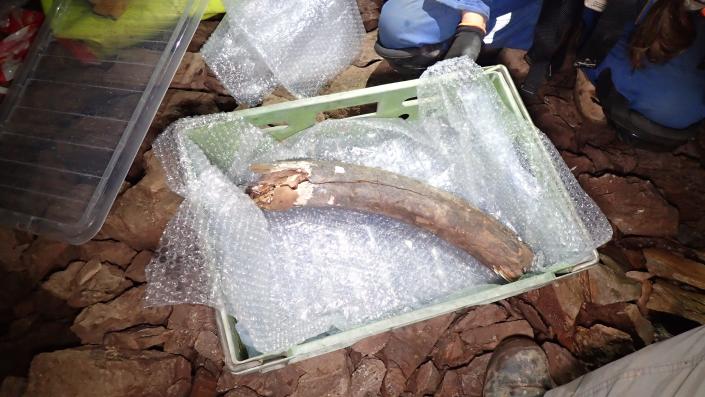Scientists uncovered the remains of several extinct animals, including a wooly mammoth, wooly rhinoceros, and wolf in Devon, southwest England
(BI) Experts said that the findings, estimated to be from the last Ice Age around 30,000-60,000 years ago, are an “exceptional” discovery that sheds light on the megafauna that roamed early Britain.
The well-preserved samples included a tusk, molar tooth, and other bones of a wooly mammoth and the incomplete skull and lower jaw of a wooly rhinoceros, The Sherford Consortium said in a press release.
Researchers also found a virtually complete wolf skeleton and partial remains of animals including a hyena, horse, and red fox.
The bones of various small mammals such as bats and shrews were also found.


The team made the discoveries during the construction of new town Sherford, a new 5,500-home community under development on the edge of Plymouth.
“This is a major discovery of national significance – a once in a lifetime experience for those involved,” Rob Bourn, managing director of Orion Heritage and lead archeologist on the project for the Sherford Consortium, said.
“Construction happening at Sherford is the sole reason these findings have been discovered and it is remarkable that they have laid undisturbed until now.”
Bourn said that it was a “rare and special occurrence” to find artifacts untouched for so long, as well to have so many complete or semi-complete individual animals.
Researchers said that studying the remains, particularly the herbivores and their food sources, will provide an insight into the plants that may have previously existed in the local environment.
It is currently unclear whether the animals found at Sherford coexisted around the same time or existed at different points over a more extended time period, researchers said.



